
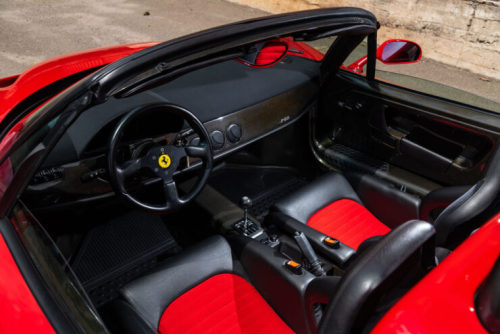


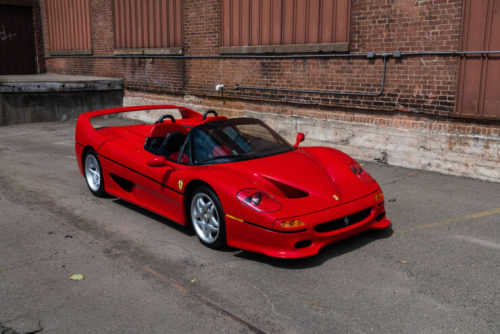
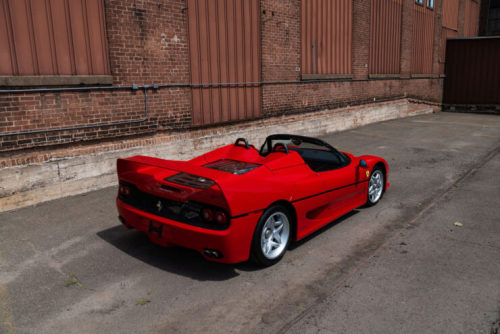

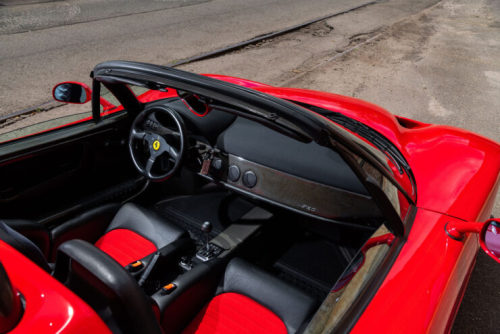

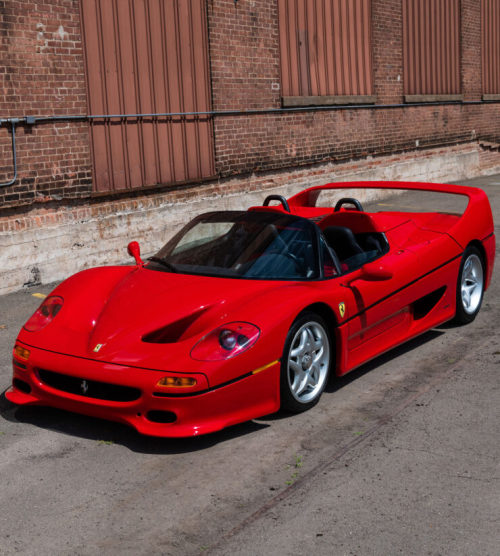
(via The Ferrari F50: A Formula 1 Car With Two Seats)
from Tumblr https://somar78.tumblr.com/post/658507667730530304
The Citroën Méhari was created as a French answer to the much-loved little Mini Moke, both were designed to be lightweight, inexpensive to buy, and cheap to operate, but unlike the steel-bodied Moke the Méhari would be one of the first production vehicles with a full ABS plastic body.
The idea to build a plastic French version of the Moke is attributed to French World War II fighter ace Count Roland de la Poype, the head of French company SEAB. He realized that ABS plastic would have considerable benefits over a steel body, the two key advantages being the fact that it wouldn’t rust and it’s very light weight.
—–
✱ The Citroën Méhari was developed as a French take on the Mini Moke, it has an ABS plastic body and the same basic chassis and drivetrain as the other vehicles on the Citroën A-Series platform.
✱ Over 143,000 examples of the car were built in France, Spain, Portugal, and South America.
✱ The 602cc engine can push the 1,157 lb car up to a top speed of 62 mph, but regular driving is typically done under this level.
De la Poype took his inspiration from the Moke but he believed he could design a better car, the Moke was somewhat limited by its low ground clearance, stiff suspension, and rust-prone stamped steel body.
So with the Méhari he worked on solving both of those problems, first with the use of the aforementioned ABS plastic body and secondly by utilizing the Citroën A-Series chassis and running gear, also used on the Citroën 2CV, Dyane, and Ami.
Above Image: The car offers seating for four and there’s some additional room for luggage in the rear, with a fold down tailgate for easy access.
The Citroën A-Series platform made use of a steel chassis, independent suspension on all four wheels, and a simple front-mounted engine with front-wheel drive. The A-Series platform also gave the Méhari notably better rear ground clearance than its British counterpart.
Count Roland de la Poype was convinced that he was onto a winning idea, so much so that he developed a fully-functional prototype of the Citroën Méhari before he showed it to Citroën. SEAB was a supplier to the French automaker and thankfully they gave his design the green light for production.
The Citroën Méhari was named after a type of Camel known for its speed, which was possibly a little misleading but the car was also capable of traversing difficult terrain, so the comparison to camels was somewhat apt. The car would first be offered for sale to the general public in 1968, it would prove to be an almost instant cult classic, and factories in Spain, Portugal, Argentina, and Uruguay would produce their own local versions.
Interestingly the United States imported a number of Méharis in 1969 and 1970, they had to import them classified as trucks as they didn’t comply with current road safety legislation. The Budget car rental company offered Méharis to customers in the Hawaiian islands, which is how many Americans first became familiar with the model.
Over the course of the 1968 to 1987 production run over 143,000 examples of the Méhari would be built and many of them have survived to the modern day thanks to their rust free bodies. Companies like Méhari Club exist to keep the model on the road, you can buy anything you need including all new chassis, engines, and body parts.
The Citroën Méhari uses the same chassis, running gear, and drivetrain as its Citroën A-Series siblings, it’s powered by an air-cooled 602cc flat-twin engine capable of 29 hp at 5,750 rpm, and power is fed to the front wheels via a 4-speed manual gearbox.
Above Image: The Méhari has a simple folding soft top for rain and run protection, but it offers somewhat little protection from serious weather.
The top speed of the Méhari is 62 mph or 100 km/h, though the car was never designed for sustained high speed use. The key reason that 62 hp engine is able to get the car up to 100 km/h is the low curb weight, the car tips the scales at just 1,157 lbs or 525 kgs, largely thanks to that lightweight plastic body.
Due to the success of the Méhari, Citroën released a four-wheel drive version in 1979. Unlike the Citroën 2CV Sahara 4×4 which used one engine at the front and one at the back to provide four-wheel drive, the Méhari 4×4 used a more traditional single engine up front sending power to all four wheels.
The Méhari 4×4 can be easily distinguished from its 2×4 counterpart thanks to the spare tire mounted on its hood. It also has additional bumpers, and the 1982 model had flared wheel arches with larger wheels and tires.
The car you see here is a Citroën Méhari from 1972, it was purchased new and used in Siena, Italy by its first owner.
By the 1990s the car was looking a little worse for wear and it was taken off the road in 1995. Luckily the story doesn’t end there, the car was given a full body-off restoration with the frame, suspension, and body all receiving ample attention, with images in the history file to document it all.
The car has now been imported into the United States and it’s due to roll across the auction block with RM Sotheby’s in early August. The current price guide is $25,000 – $30,000 USD, if you’d like to read more about it or register to bid you can click here to visit the listing.
Images: ©2021 Courtesy of RM Sotheby’s
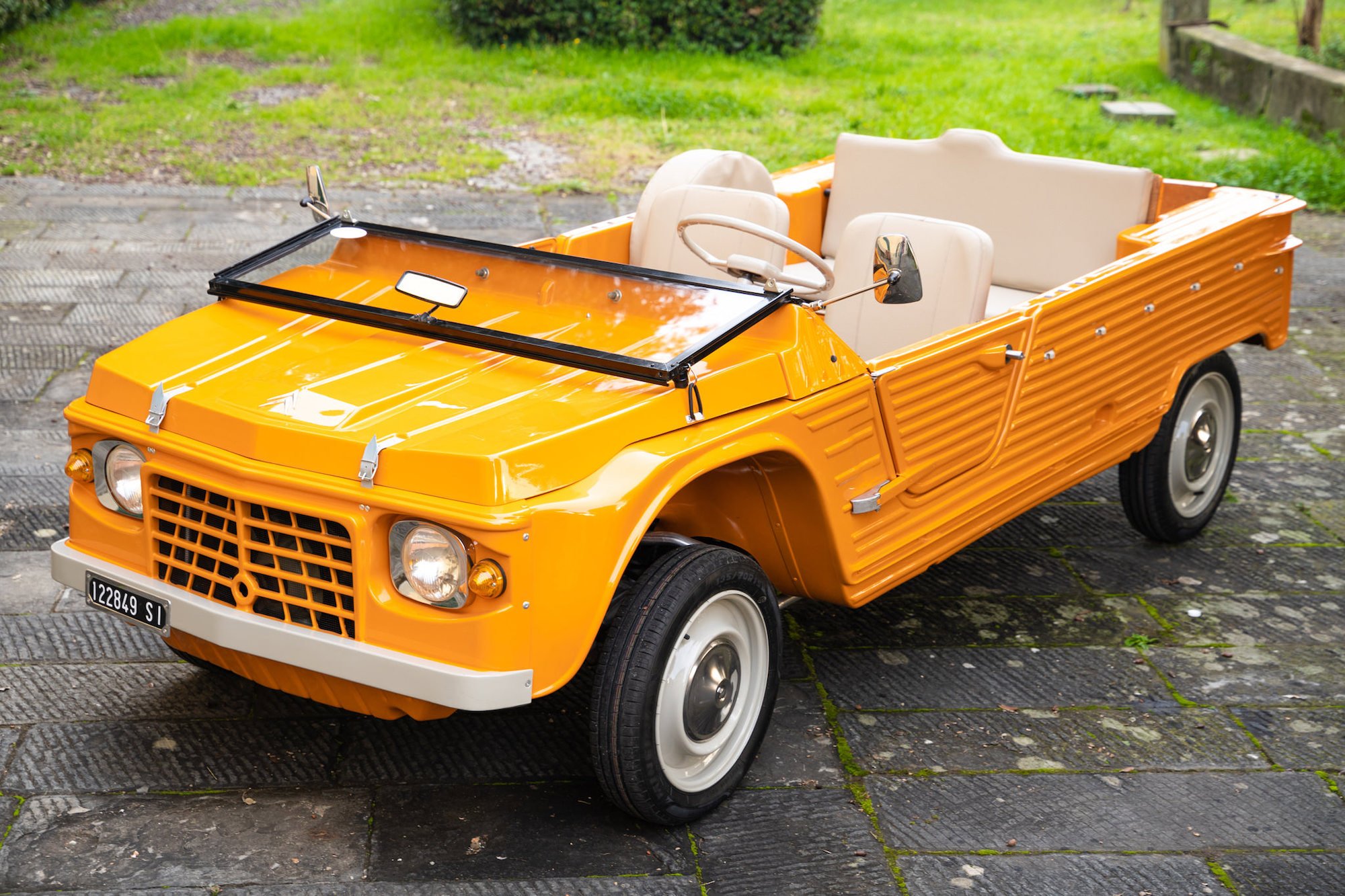
The post The Citroën Méhari – France’s Quirky Answer To The Mini Moke appeared first on Silodrome.
This was the rear wing fitted to Mario Andretti’s ill-fated Lotus 79 Formula 1 car, the same car he used to set the pole position for the 1978 United States Grand Prix in front of the jubilant 150,000 strong home crowd at Watkins Glen.
Unfortunately on the final warm up lap before the race Andretti spun the car into the barriers, forcing him to race back to the pits and use the team’s backup car for the race.
This backup car would develop brake problems early on, and would later retire with a blown engine. It wasn’t all bad news for Andretti however, as he had already secured the points to win the Drivers’ Championship at the preceding race in Italy.
The segregation between Formula 1 fans and the teams was considerably less rigid than it is today, and as a result Lotus was known for auctioning off parts of their cars to fund race after parties.
Above Video: Top Gear presenter Chris Harris putting the Lotus 79 through its paces and sharing insights about what made the car so special.
This wing was removed from Andretti’s wrecked Lotus 79 and sold off to the highest bidder after being signed by Colin Chapman, Mario Andretti, and “Miss Hurst” Linda Vaughn.
Sadly Andretti’s signature has faded away over time but he’s still a regular fixture at many vintage race meets, so getting him to sign it again likely wouldn’t been too difficult for an enterprising new owner.
The wing remained in the ownership of the same family to the current day, it’s now due to be offered by RM Sotheby’s in early August with out reserve, with a price estimate of $10,000 to $20,000 USD.
If you’d like to read more about it or register to bid you can click here to visit the listing.
Images: Nathan Leach-Proffer ©2021 Courtesy of RM Sotheby’s
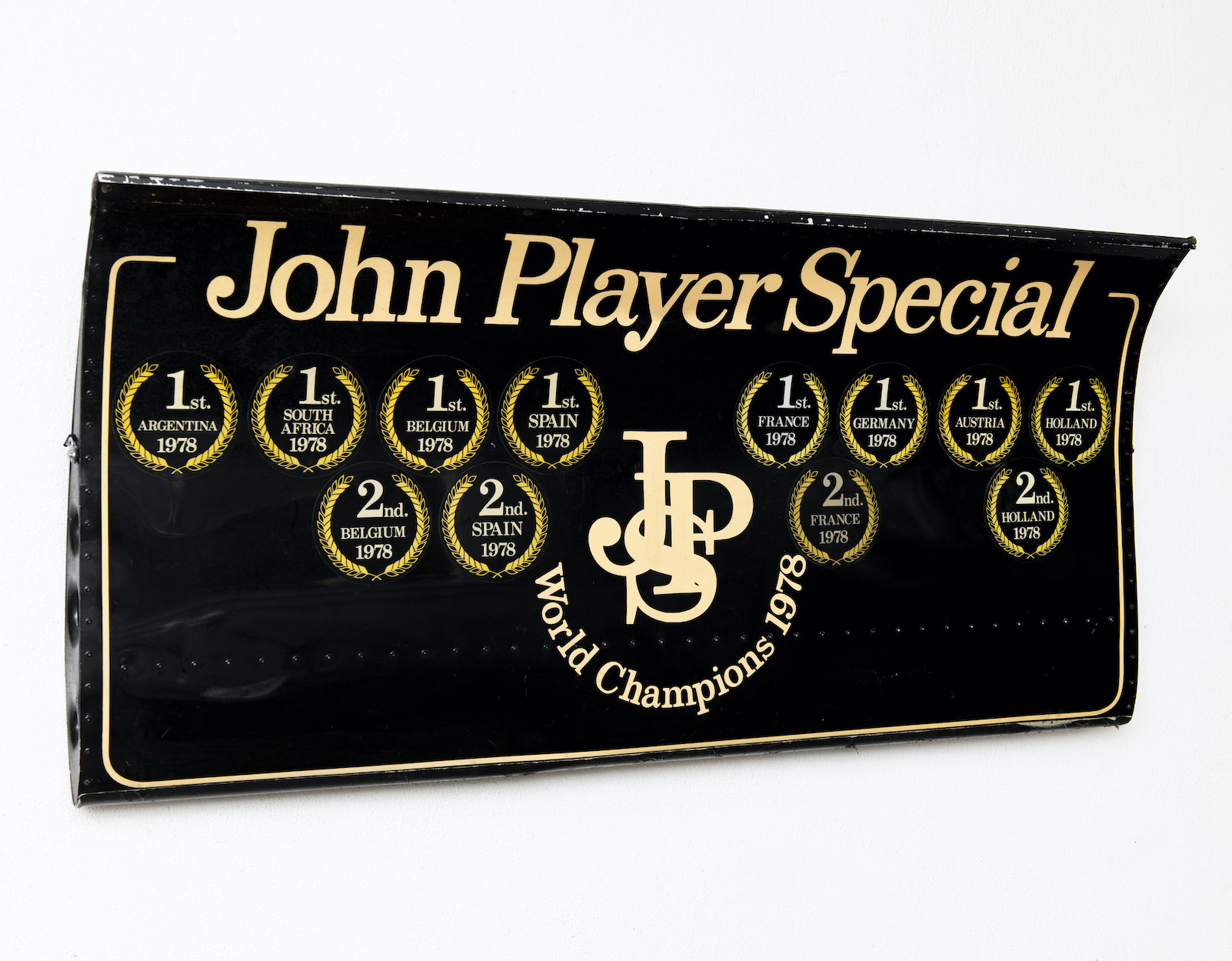
The post For Sale: Mario Andretti’s Lotus 79 Rear Wing, Circa 1978 appeared first on Silodrome.
This Lamborghini Miura P400 S was hidden away in a California Bay Area warehouse for well over 40 years, a victim of a minor fender bender that had seen it laid up for repairs that wouldn’t happen until it was rediscovered four decades later.
The early history of this Miura is fascinating, it was bought by a wealthy Iranian family and shipped to their daughter – a 19 year old coed attending college at University of California, Berkeley.
Their plan was for their daughter to sell the car in the United States and return the money to them, possibly a way of discreetly getting money out of Iran. As you may have already guessed, things didn’t gp according to plan after their daughter fell in love with the car, and drove it for two years accumulating 16,000 miles in the process.
✱ This Lamborghini Miura P400 S spent over 40 years hidden away in a warehouse in California after sustaining minor front end damage and being put aside to wait for repair work that would take decades to begin.
✱ During the repair process the original paint was removed, leaving the car with a gleaming bare metal body. It will be up to the next owner whether to keep it as-is or repaint it in its original color of Gray-White.
✱ Under the skin the car remains so original that it’s an ideal candidate to be used as a reference example for restorers of other Lamborghini Miuras who want to ensure their cars are returned to a state as close as possible to factory new.
The Lamborghini Miura was produced from 1966 until 1973, a relatively short eight year production run that fundamentally changed high-performance cars forever.
Above Image: The car now features a bare metal finish, it’ll be up to the new owner whether to paint it or keep it as-is.
Some label the Miura the first true “supercar,” and although that’s a hotly debated topic, there’s no denying that the car is one of the most influential supercars in history.
As with many revolutionary creations, the project to build the Miura began hidden away in a backroom away from the executives and the beancounters. In the mid-1960s the three top engineers at Lamborghini, Gian Paolo Dallara, Paolo Stanzani, and Bob Wallace spent their evenings and weekends developing a new car codenamed the “P400.”
They developed an advanced semi-monocoque steel chassis with the front and rear subframes bolted into place. The V12 engine was mounted in a rear-mid position, but unusually, it was mounted transversely (sideways) with the crankshaft parallel with the rear axle line.
In order to get everything packaged as tightly as possible and to avoid unfavorable weight distribution with a focus on mass centralization, the three men borrowed an idea from the humble British Mini. The 5-speed gearbox and V12 engine shared the same housing, this created a relatively small total package that could be slotted in behind the driver and passenger.
Company founder Ferruccio Lamborghini had made it clear he wasn’t interested in fancy, impractical sports cars, he preferred dignified V12 GT cars that gave Enzo Ferrari a run for his money. So it was with no small amount of trepidation that Dallara, Stanzani, and Wallace approached him with their design.
Above Image: The Marcello Gandini-designed curves of the Miura have been studied by car design students for decades.
They needn’t have been too concerned. Ferruccio is said to have quickly realized the value of such a car as a halo model for the company, and he approved prototype production.
The rolling chassis was first shown to the public at the Turin Salon in 1965 where it wowed the world, and Lamborghini were flooded with interest from people who wanted to order the car without having even seen its body.
Marcello Gandini at Bertone was tasked with styling the body of the Miura, his design would be instantly classed as one of the most beautiful of all time, a title it still firmly holds today all these years later.
Over the course of the Miura production run there were a number of variations as the model was evolved. The first was the P400, this stands for “Posteriore 4 Litri”, or “Rear 4 Liter,” a reference to the engine location and swept capacity.
The P400 would be followed by the P400 S which included a number of cosmetic revisions and a power increase of approximately 20 hp. After this the P400 SV arrived with a further 15 hp and later models in this line would be the first with the engine and gearbox using separate castings to ensure both could run the appropriate oil type.
The final iteration, though rare, was the P400 SV/J of which only six are believed to have been built. There were a few unusual one-off designs too, like the Jota, the Roadster, and a P400 SVJ Spider.
The car you see here is a rare Series II “transitional” P400 S that was factory-equipped with P400 SV features, it’s one of approximately 50 cars built in this way.
Above Image: Inside, the car has two seats, a gated manual transmission, ample leather upholstery, and plenty of gauges to let the driver know what’s happening in the engine bay.
Over the course of the production run just 764 examples of the Miura were built before it was superseded by the show stopping Lamborghini Countach in 1974. Today the Miura is considered one of the most collectible classic cars in the world.
This Miura has a more interesting history than most of its siblings, as mentioned in the introduction, this car is likely to have been used as a clever way of getting money out of Iran.
The car was purchased at the Lamborghini factory in Italy, and the buyers also received delivery of the car there before arranging to have it shipped to California so their daughter could sell it for them.
Although she did go through the effort of posting a classified ad for the car it wasn’t sold for one reason or another, and so she drove the car for two years as she attended her classes at Berkeley.
This was all brought to a halt after a minor accident resulted in damage to the front right headlight area of the car. The complexity of the repair was too much for local panel beaters at the time, due in so small part to the fact that the intricate clamshell aluminum hood needed to be shaped by hand.
The car was eventually purchased by a San Mateo body shop owner who had previously done minor repairs on the car, and he ordered the required parts for the repair from Italy.
Above Image: The car remains so original that it’s still rolling on its factory-fitted Pirelli Cinturato CN73 tires.
The project froze at this point for over 40 years, the newly ordered parts and old damaged parts all remained with the car as it sat in the corner of a warehouse and gathered dust.
Fortunately the car was finally acquired by a Miura preservation specialist, who enlisted a team of experts to recommission the long-dormant car. Steve Beckman of California-based Beckman Metal Works repaired the bodywork damage over a period of eight months.
Chris Morgan of Morgan Images provided additional paint and bodywork repairs, he also stripped off the aged original paint and left the car as you see it today, showcasing its beautiful alloy body sections.
Lamborghini Miura specialist Jeff Stephan went through the mechanical aspects of the car repairing or replacing parts where needed. The fuel tank was removed and serviced, the fuel manifold was restored, the water and oil pumps were rebuilt, and the engine timing chain tensioners were serviced among other work completed.
The car is now due to cross the auction block with RM Sotheby’s on the 14th of August in California. The price guide is $1,800,000 – $2,200,000 USD and you can click here if you’d like to read more about it or register to bid.
Images: Karissa Hosek ©2021 Courtesy of RM Sotheby’s

The post Warehouse Find: A Bare Metal Body Lamborghini Miura P400 S appeared first on Silodrome.
Carrera Passion is the latest film from Driving La Carrera, one of the best kept secrets on YouTube with a number of fantastic films published but only a few thousand views.
This film tells the story of the Museo Del Automovil Racing Team made up of Gabriel Pérez Torres and his co-driver Angelica Fuentes García, as they race 2,000 miles across Mexico in 7 days competing in the Carrera Panamericana.
When the race was first run in 1950 the Carrera Panamericana quickly developed a reputation as one of the most dangerous races in the world. The event was created to publicize the new 2,200-mile north-south Mexican segment of the Pan-American Highway and was funded by the Mexican government as a way of attracting attention to the new business opportunities afforded by the highway.
During this time, 25 people were killed, including drivers and spectators. As a result, the race was cancelled after the 1954 race. The race was revived in 1988 with vastly improved safety.
Today the Carrera Panamericana is run as a stage race, similar to the original, but with a combination of “speed” stages and “transit” stages. Speed stages are timed, closed-road races that require entrants to get from point A to point B in the shortest amount of time. This requires driving flat out along winding mountain roads that pass through small villages, along cliffs, and through wooded sections of forest.
There is a reason the roll-cages used are thicker than in other races – the 500-foot drop offs have something to do with it. Transit stages are run as a time-speed- distance (TSD) rally, with driver and navigator attempting to finish a stage at a specific time. The combination of scoring in both types of stages determines the overall winner.
Subscribe to the Driving La Carrera YouTube Channel here to be the first to see their new films.
Auto racing is Angelica Fuentes’s passion. At sixteen, she became a Mexican champion. Now she is racing the toughest road race in the world, La Carrera Panamericana. She and Gabriel have won this race before. They are trying to win it again. Racing 2,000 miles in seven days is tough. Mechanical problems might steal their podium, but a team with passion never gives up.
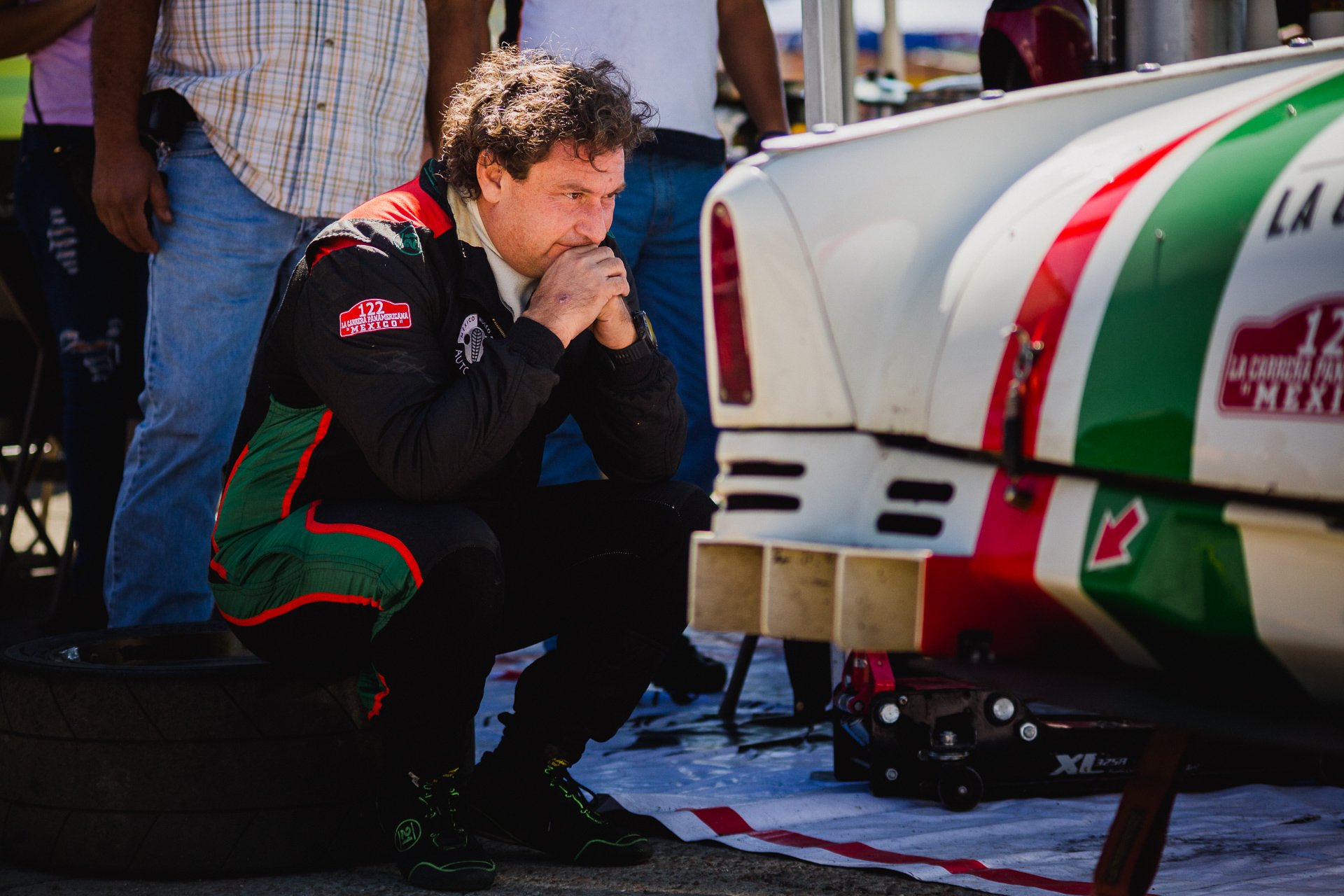
The post Full Film: Carrera Passion – Racing To Win La Carrera Panamericana appeared first on Silodrome.